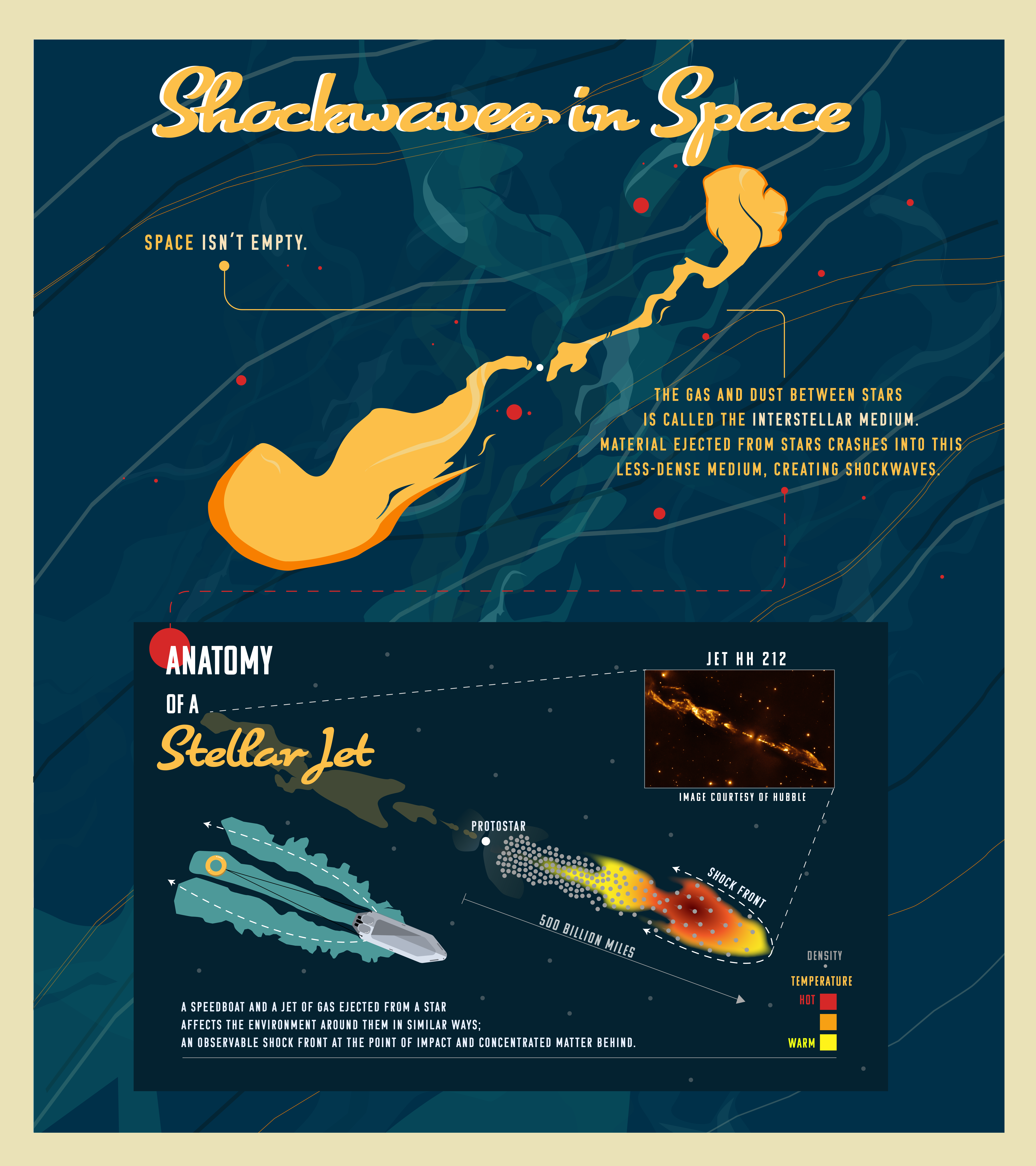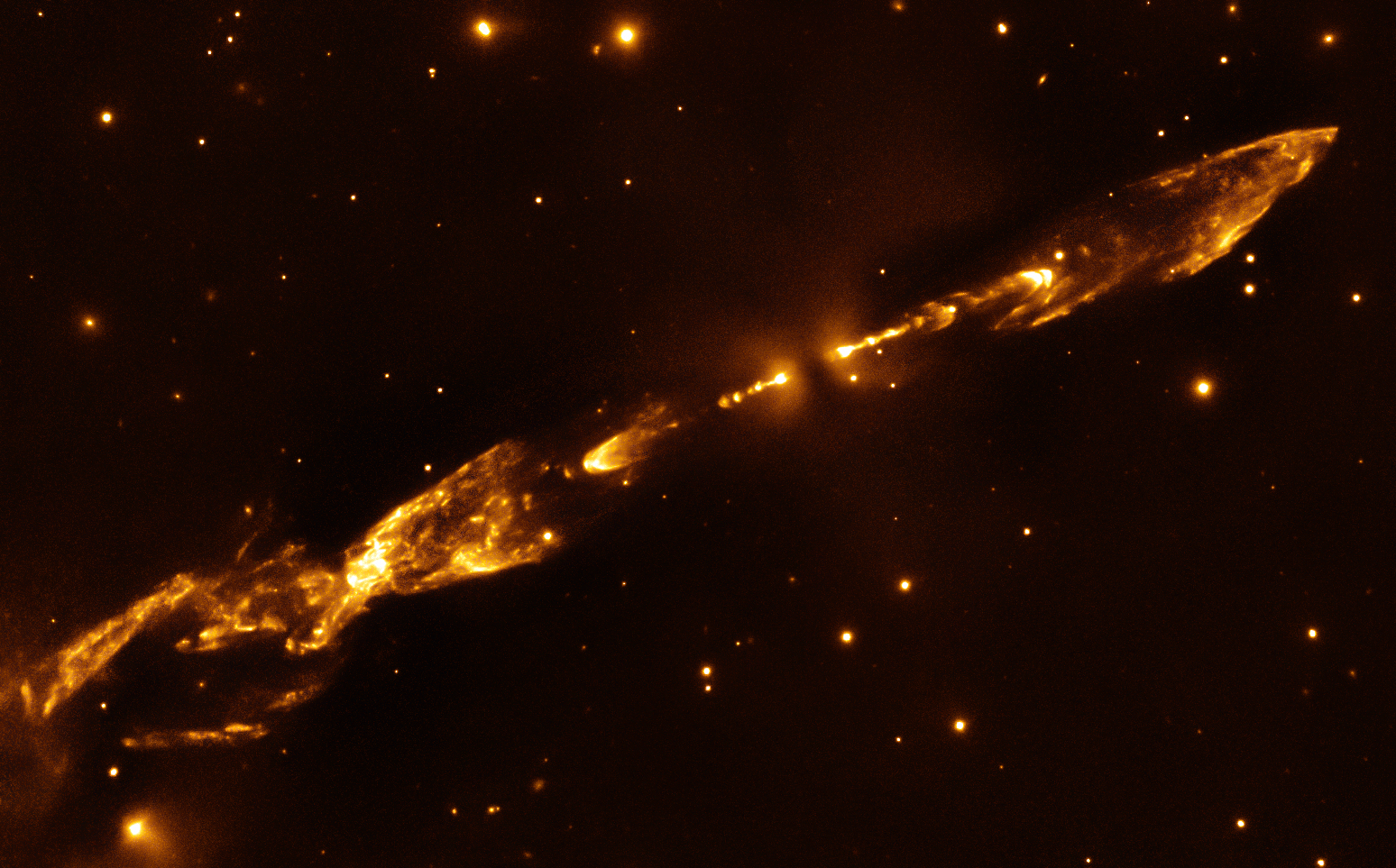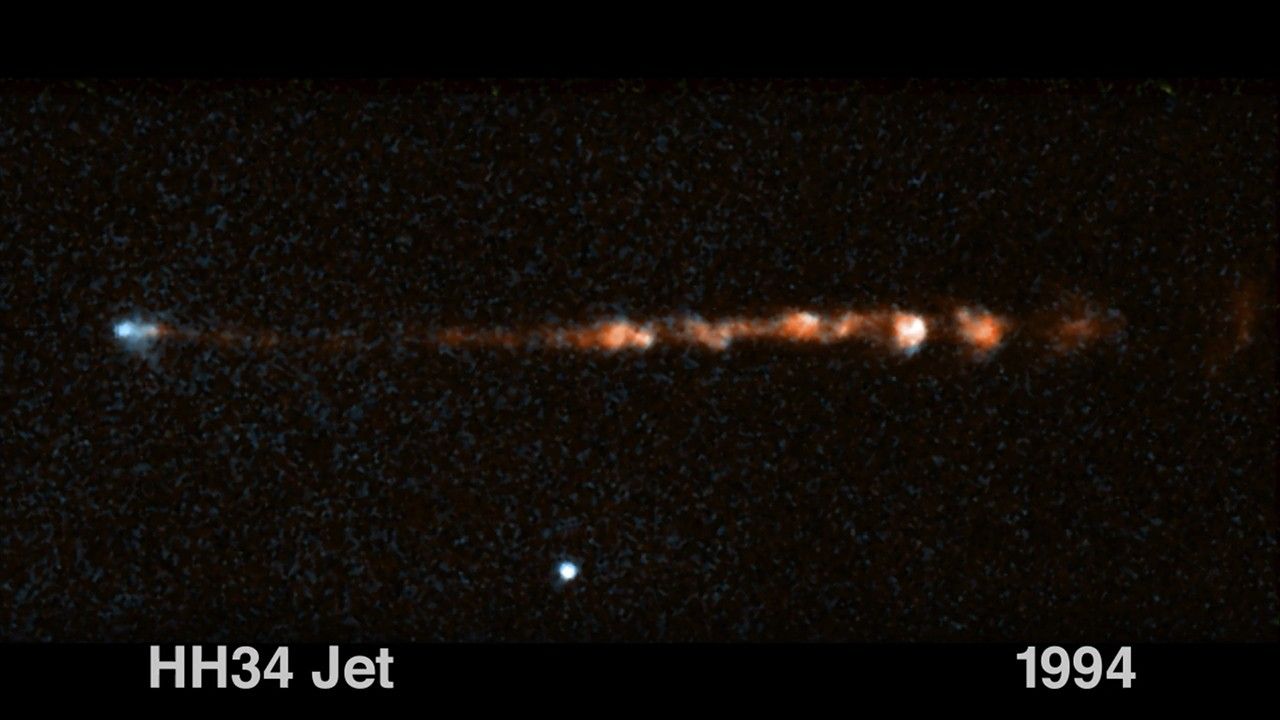1 min read
Anatomy of a Stellar Jet

Extended Description and Image Alt Text
Extended Description
Title text "Shockwaves in Space" runs in large yellow letters at the top.
The entire graphic has a light yellow border. The illustrated background, shown in shades of blue and blue-green, extends top to bottom.
Below the title, a label on the left reads "Space isn’t empty." It has a yellow line pointing to part of the blue-green background near the center.
A small white dot, representing a star, is in the center. From the star are two yellow, bulbous jets: One stretches toward the lower left and the other toward the upper right. A yellow line points from the jet on the right to a label that reads "The gas and dust between stars is called the interstellar medium. Material ejected from stars crashes into this less-dense medium, creating shockwaves."
A red dotted line extends from the text to the second half of the infographic, an inset in a darker blue box that is titled "Anatomy of a Stellar Jet."
At the top right of this box is a small inset of a Hubble Space Telescope image labeled "Jet HH 212." The Hubble image shows an orange bipolar jet set against the black background of space. Dotted lines from the top left and bottom right corners of the image extend left to the illustration at the center of this box, which is angled from top left to bottom right, indicating the illustration is a representation of this jet.
A small key in the bottom right of the dark blue box shows the density of gas is represented by the density of gray dots. Below that is a vertical temperature scale with hot in red at the top, then orange, then warm in yellow at the bottom.
At the middle of the illustrated jet is a small white dot labeled "Protostar." To its left is a greenish brown region that looks like irregular ejecta. This is the star’s other jet. To the star’s immediate right is the highlighted jet. There are a series of small gray dots, which indicate density. They are very closely clustered nearer to the star but become more spread out along the right-hand side of the jet. Starting close to the protostar and then moving further out, the jet becomes yellow, then orange, then red at its center, before quickly transitioning to orange and yellow again, where it ends in a semi-circle. The semi-circle is labeled "Shock front." The width of the area from the protostar to the shock front is labeled with a white arrow that reads "500 billion miles."
To the left of this, at the same angle, toward the bottom of this section of the graphic, is an illustrated gray speedboat moving through water. The waves from the boat, or wake, become wider as they travel behind the boat. Two dotted lines trace the wake behind the boat, forming a U shape. A yellow circle, or float, is shown between the dotted lines and is attached to the boat with two thin lines.
Below this, text reads "A speedboat and a jet of gas ejected from a star affects the environment around them in similar ways: An observable shock front at the point of impact and concentrated matter behind."
Image Alt Text
A vertical infographic, titled "Shockwaves in Space" at the top, with the subhead "Anatomy of a Stellar Jet" in an inset halfway down, illustrates and labels the details of a stellar jet. See extended description.
- Release DateNovember 14, 2018
- Science ReleaseNASA’s Webb Telescope Will Investigate Cosmic Jets from Young Stars
- CreditImage: NASA, ESA, CSA, Joseph Olmsted (STScI)
Related Images & Videos

Herbig-Haro 212 (VLT)
A pair of jets protrude outwards in this infrared image of Herbig-Haro 212 (HH 212), taken by the European Southern Observatory’s Very Large Telescope. Webb’s high resolution and sensitivity will allow astronomers to examine objects like this in greater detail than ever before.
Share
Details
Laura Betz
NASA’s Goddard Space Flight Center
Greenbelt, Maryland
laura.e.betz@nasa.gov
NASA, ESA, CSA, Joseph Olmsted (STScI)































